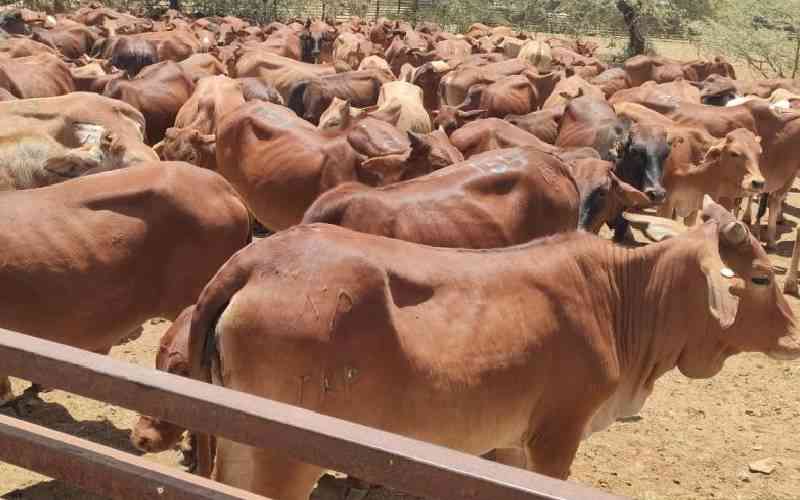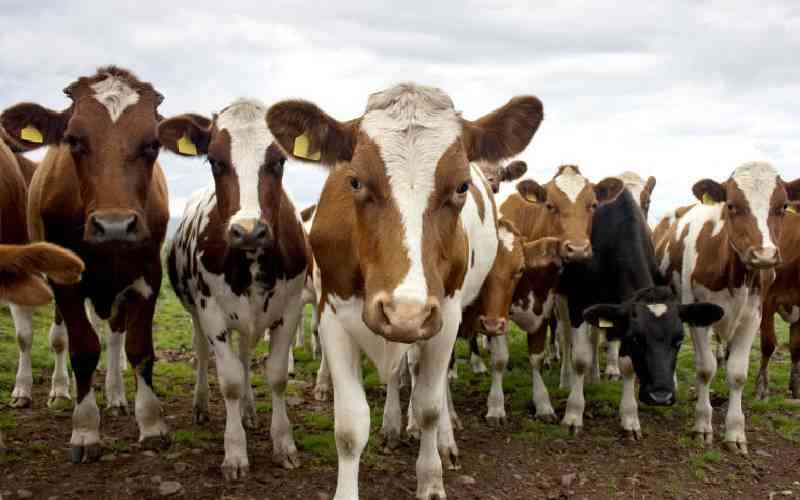
Mr John Kanyanya is a small-scale farmer in my Mumias rural backyard. Being an old man he still holds onto the mantra I was educated by the village and whenever I’m around I give him free veterinary services as a way of “paying back” to the society.
Of course, I will have one or two drugs got free from some Dr Odhiambo or Dr Mutiga for marketing or trial purposes and I always dish them out to my village folks who all proudly introduce me as their son. I started off my veterinary practice traversing the many rural villages in my Matungu home turf but got little if any income from the noble profession; reason I moved and pitched tent in Nairobi.
Many farmers in Mumias for a long time concentrated on sugar cane farming but the challenges brought about by the near collapse of Mumias Sugar Company has awakened them to the beauty of mixed farming and dairy animal production is slowly but surely picking up.
Actually I am tempted to go back and establish my practice there once again judging from the number of exotic dairy mooing and bellowing I picked across the ridges over this festive season.
Hard truth
Back to Mr Kanyanya; this December I made my routine annual visit to his Nyapora farm; next to my former primary school – St Peter’s Mumias Boys and found him in an upbeat mood.
He was quick to inform me that he has added a feather to his hat and was now a senior citizen (a retired civil servant). We exchanged some niceties before he walked me to his farm and bragged how he was a budding model farmer across the nearby villages of Ekama, Lumino and Matawa; assertions I have no choice but must agree to – it is a skill to keep interpersonal conversations alive.
He heaped praises on his dairy animals as having maintained a lead in daily milk production across the three villages; emphasis was placed on one dairy animal sweetly christened “Nalwenje” (in the Luhya community when girls get married they are called by their clan names, Kanyanya’s wife is from Nalwenje clan).
I get worried when a lot of praise is heaped on an animal because it easily clouds medical judgment; in such circumstances if you are a professional insist on records and don’t be surprised when you discover that what was said is far from the truth.
Now we talked at length about his herd health programme, I requested his records which I must say are good and informative in their weird homemade templates. In my analysis of the records I recommended that Nalwenje must be given a resignation letter and that was the news or rather the bone of contention.
Kanyanya now joined by Nalwenje the wife vehemently objected!
Kanyanya is not alone in this; I must confess that the greatest challenge in my veterinary practice is convincing a farmer to cull beloved animals; yet culling is a common feature in herd health management programme. Culling (send an inferior animal to be slaughtered) is the difficult arithmetic you must do for the farm to remain in the profit segment of the financial graph.
Emotional attachment
Serious farmers will normally develop a close relationship with their animals defined by unique acquisition circumstances, nurtured through daily encounters when milking, the regular stroking and observing the herd gracefully graze on your farm ingrains almost permanently passionate messages that livestock are part and parcel of a farmers’ soul and body. In turn farmers develop a mental deception that sees cows as pets and not livestock.
Stay informed. Subscribe to our newsletter
While learning culling as a topic in vet school no one prepared us to be psychotherapists; this is an inclusion I would beg Prof Peter Mbithi; a vet and University of Nairobi Vice Chancellor to consider in veterinary medicine curriculum review. Farmers will hold onto dairy cows with unique background — they were given as a present or inherited and will have special names like Kanyanya’s Nalwenje.
They will wish to hold unto them until death do them part forgetting that livestock too have an expiry date or a write off point beyond which they become unproductive and uneconomical to keep and need a resignation or dismissal letter because they aren’t pets!
There comes a time when you have to let a dairy cow go off your herd; this may come gradually or abruptly.
Today she may be a superb milk producer but be alive to the fact that a time will come that her performance will dwindle to uneconomical levels if she lives to around her sixth or seventh birthday. This is what commercial production does to animals; while they can live up to 20 years the hustles and bustles of giving you milk reduces their lifespan by three fold.
Methusela cow
Missing teeth, sagging back and walking troubles are signs she is Methuselah of a cow and you must give her a long deserved break. If it is a mature bull you have had for some many years, a time reaches when you have to let him go to avoid inbreeding. Young bulls meant for breeding with an empty scrotum due to undescended testicles or female cow borne twins with a male will never develop feminine characters; they are both infertile and unfortunately early candidates for culling no matter the exterior beauty.
With the attachment you have developed over time it may take a lot of convincing to let go animals from your farm; in the agricultural lingo we call it culling. The class room definition of culling is the removal from the farm of an unproductive, diseased or uneconomical animal from the flock.
Good records coupled with an effective herd health management programme will ensure a farm maintains or increases its profitability.
Culling of animals can happen at two instances; when they age (a farmer does a dismal letter) or due to disease, deformity or injury (a farmer does a resignation letter). However, it is common to encounter farmers who will defy culling professional advice and hold onto old or diseased animals.
When culling; assess production or reproduction level against the set levels. A cow that gives a calf after two more or more years is a poor calfer and if your goal is to increase the herd size then you will have to do a transfer letter to dispatch it to another farm whose goal is your opposite. If she aborts in between the calves, then maybe she is a reproductive disease carrier; a threat to the rest and must get a dismissal letter; she is better off on your fork than farm. Worse still if she has repeatedly suffered mastitis, lost one or two quarters and you call her a dairy animal?
You aren’t into profitable dairy production and has to painfully jot down a dismal letter.
If she has swallowed nails that have lounged in one of her four stomachs and is slowly penetrating into other organs in other words she has hardware disease – you must convince your software that with hardware disease she is no good for milk production and has to get a dismissal letter.
A beef animal with stunted growth, poor weight gainer is uneconomical and will never bring in profits but losses and thus should receive a dismal letter before they turn into white elephants.
The good news is that whether you do a dismal, transfer or resignation letter your animal will exchange hands and in most instances you stand to benefits in monetary terms so next time your vet tells you to cull don’t wear a stone heart.
- The writer is a Veterinary Surgeon working as a Communication officer at Kenya Tsetse and Trypanosomiasis Eradication Council – KENTTEC
 The Standard Group Plc is a
multi-media organization with investments in media platforms spanning newspaper
print operations, television, radio broadcasting, digital and online services. The
Standard Group is recognized as a leading multi-media house in Kenya with a key
influence in matters of national and international interest.
The Standard Group Plc is a
multi-media organization with investments in media platforms spanning newspaper
print operations, television, radio broadcasting, digital and online services. The
Standard Group is recognized as a leading multi-media house in Kenya with a key
influence in matters of national and international interest.
 The Standard Group Plc is a
multi-media organization with investments in media platforms spanning newspaper
print operations, television, radio broadcasting, digital and online services. The
Standard Group is recognized as a leading multi-media house in Kenya with a key
influence in matters of national and international interest.
The Standard Group Plc is a
multi-media organization with investments in media platforms spanning newspaper
print operations, television, radio broadcasting, digital and online services. The
Standard Group is recognized as a leading multi-media house in Kenya with a key
influence in matters of national and international interest.









